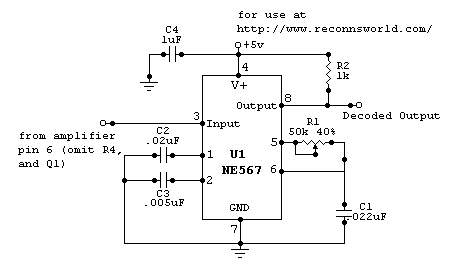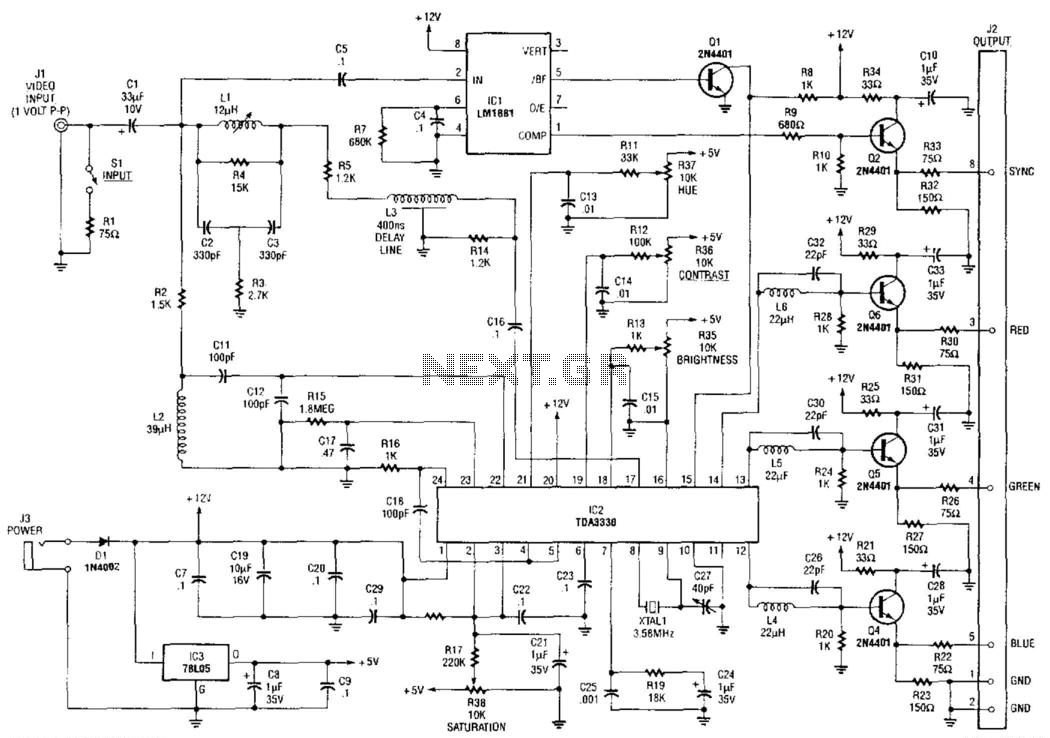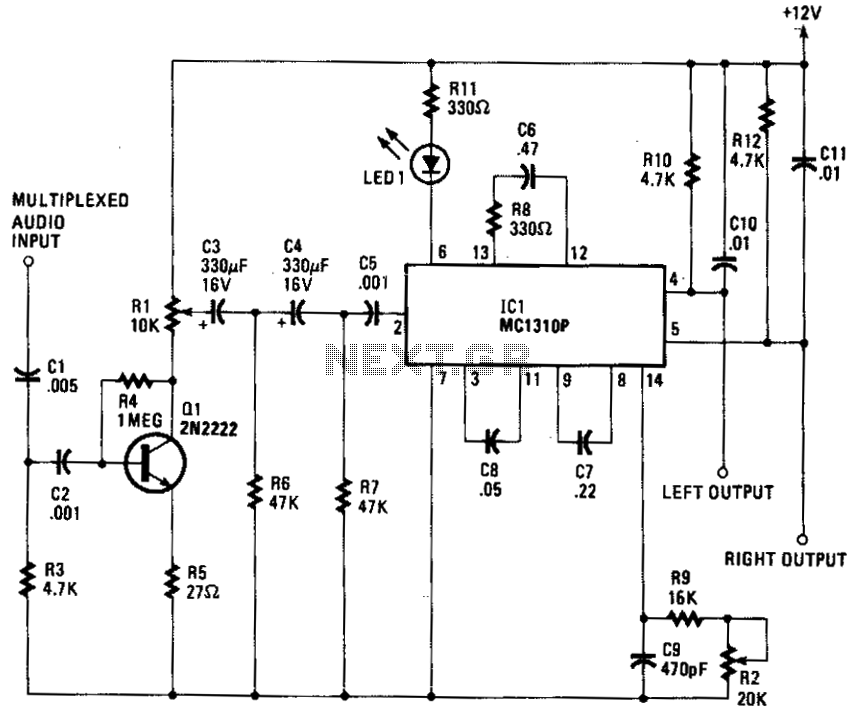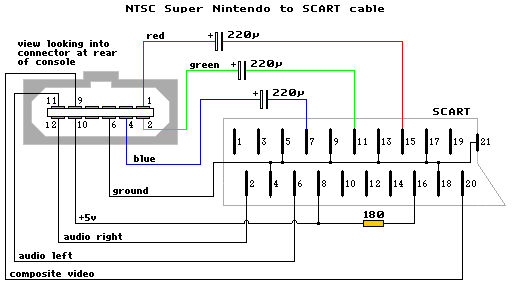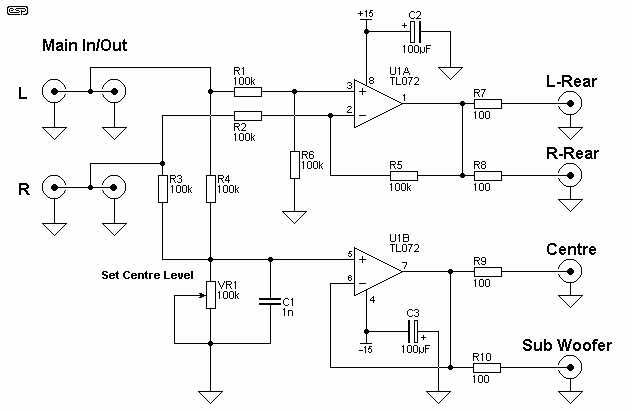
TDA3567 Ntsc Decoder
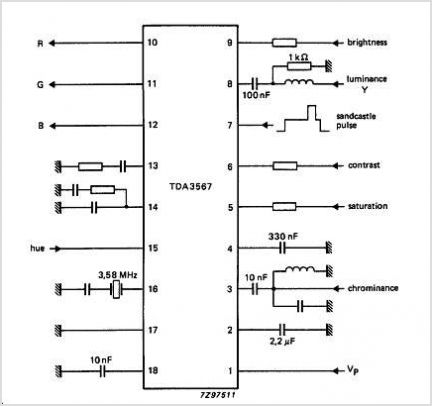
The TDA3592A transcoder circuit converts SECAM input signals into true PAL signals and can be used in combination with all types of PAL decoders by NXP Semiconductors.
The TDA3592A is a versatile transcoder integrated circuit designed to facilitate the conversion of SECAM video signals into PAL format. This functionality is crucial for applications that require compatibility with PAL-based systems, which are widely used in various broadcasting environments. The device operates by processing the SECAM input signals and accurately generating corresponding PAL output signals, ensuring minimal loss of quality during the conversion process.
The TDA3592A features a range of input and output configurations, allowing it to interface seamlessly with different types of PAL decoders. This flexibility makes it suitable for integration into a variety of television and multimedia systems. The circuit utilizes advanced signal processing techniques to handle the color encoding and decoding processes inherent in SECAM and PAL formats, ensuring that color fidelity and image integrity are maintained throughout the transcoding operation.
In addition to its primary function as a transcoder, the TDA3592A may include features such as automatic gain control, which helps to stabilize output levels, and noise reduction capabilities that enhance the overall quality of the video signal. The device is designed for ease of integration, with a straightforward pin configuration that simplifies connections to other components in the system.
Overall, the TDA3592A transcoder circuit is an essential component for systems that require the conversion of SECAM signals to PAL, providing reliable performance and compatibility with a wide range of PAL decoders. Its design reflects NXP Semiconductors' commitment to delivering high-quality solutions for video signal processing.The TDA3592A transcoder circuit converts SECAM input signals into true PAL signals, and CAN be used in combination with all types of PAL decoder By NXP Semiconductors 🔗 External reference
The TDA3592A is a versatile transcoder integrated circuit designed to facilitate the conversion of SECAM video signals into PAL format. This functionality is crucial for applications that require compatibility with PAL-based systems, which are widely used in various broadcasting environments. The device operates by processing the SECAM input signals and accurately generating corresponding PAL output signals, ensuring minimal loss of quality during the conversion process.
The TDA3592A features a range of input and output configurations, allowing it to interface seamlessly with different types of PAL decoders. This flexibility makes it suitable for integration into a variety of television and multimedia systems. The circuit utilizes advanced signal processing techniques to handle the color encoding and decoding processes inherent in SECAM and PAL formats, ensuring that color fidelity and image integrity are maintained throughout the transcoding operation.
In addition to its primary function as a transcoder, the TDA3592A may include features such as automatic gain control, which helps to stabilize output levels, and noise reduction capabilities that enhance the overall quality of the video signal. The device is designed for ease of integration, with a straightforward pin configuration that simplifies connections to other components in the system.
Overall, the TDA3592A transcoder circuit is an essential component for systems that require the conversion of SECAM signals to PAL, providing reliable performance and compatibility with a wide range of PAL decoders. Its design reflects NXP Semiconductors' commitment to delivering high-quality solutions for video signal processing.The TDA3592A transcoder circuit converts SECAM input signals into true PAL signals, and CAN be used in combination with all types of PAL decoder By NXP Semiconductors 🔗 External reference
